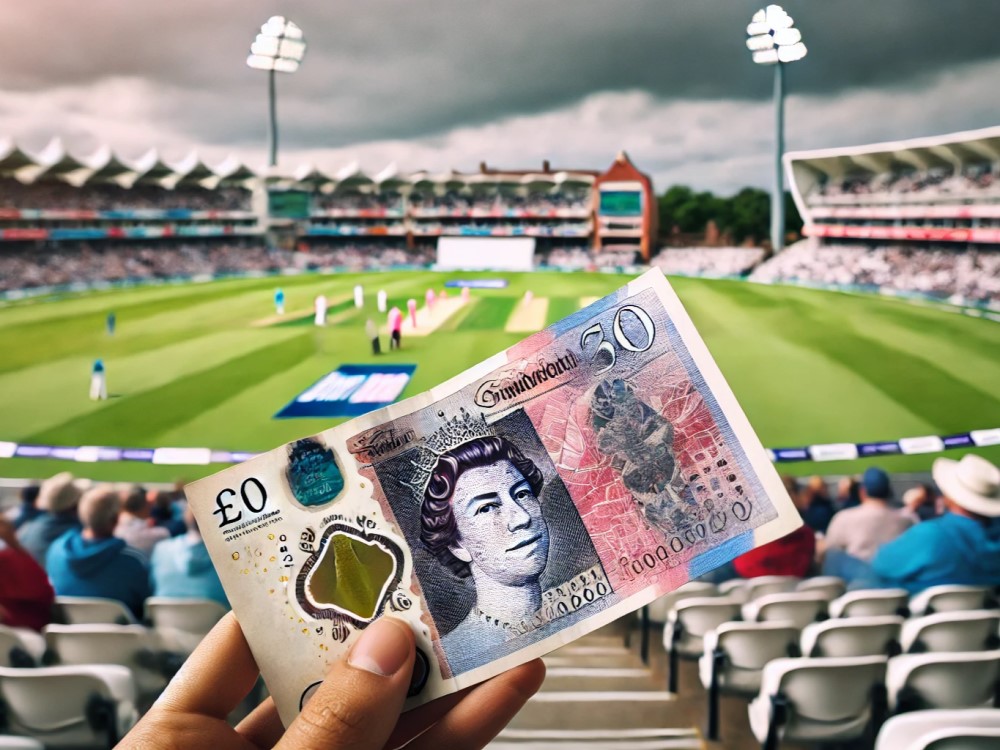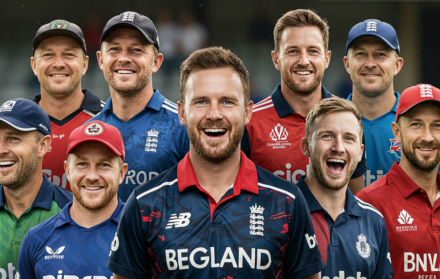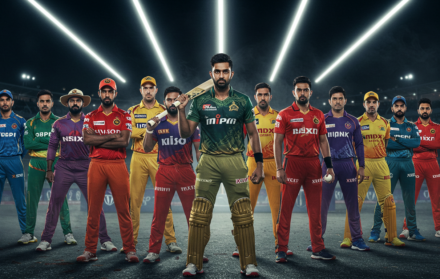
How Are Cricket Clubs Different From National Teams
Understanding how cricket clubs differ from national teams is essential for any cricket enthusiast. While both play pivotal roles in the sport, their structures, objectives, and operations vary significantly. This article aims to delve into the distinctions between these two forms of cricket, exploring their unique attributes and contributions to the game.
To start, let’s clarify the fundamental differences in structure and organization. Cricket clubs are usually regional or local teams that participate in domestic leagues and tournaments. They often serve as a training ground for players, helping them develop their skills and gain experience. For more details on cricket clubs and their operations, you might find this guide on cricket clubs insightful.
On the other hand, national teams represent their countries in international competitions, such as the ICC World Cup and Test series. These teams are composed of the best players from various clubs within the country. They often have more rigorous selection processes and higher levels of training and preparation. Learn more about the differences in international cricket.
One key difference is the level of play and competition. Cricket clubs often have a mix of professional and amateur players, focusing on fostering talent and providing a platform for competitive cricket at various levels. National teams, however, consist exclusively of professional players who have demonstrated exceptional skill and performance in domestic cricket. For an in-depth comparison, check out this article on cricket strategies and tactics.
Another distinction lies in the goals and objectives of cricket clubs versus national teams. Clubs aim to win domestic tournaments and develop players who can eventually represent their national team. They also focus on community engagement and promoting the sport locally. In contrast, national teams aim to achieve success on the global stage, bringing pride and recognition to their country. This difference in objectives is explored in more detail in this comparison of cricket formats.
The training and coaching methods also differ significantly. Clubs often have a more relaxed and diverse training regimen, catering to players at various stages of their careers. National teams, however, employ highly specialized and intensive training programs designed to optimize player performance for international competitions. Discover more about these differences in cricket coaching techniques.
Lastly, the fan base and support vary between cricket clubs and national teams. Clubs usually have a dedicated local following, with fans supporting their regional teams passionately. National teams, on the other hand, unite fans from across the country, creating a broader and more diverse supporter base. This unity and passion are highlighted in cricket fan culture.
By understanding these differences, you can appreciate the unique roles that cricket clubs and national teams play in the sport. Both are integral to the growth and popularity of cricket, each contributing in its own way to the development of players and the excitement of the game.
Structure and Organization

Cricket clubs are typically local or regional teams that compete in domestic leagues and tournaments. They are often privately owned or run by a group of members, with their structure and organization varying widely based on location and resources.
- Local Roots: Cricket clubs are deeply rooted in local communities. They often have a long history, with some clubs existing for over a century.
- Management and Funding: Clubs are usually managed by a board or committee, with funding coming from membership fees, sponsorships, and local government grants.
- Youth Development: Many cricket clubs focus on youth development, offering training programs for young players and nurturing local talent.
Cricket clubs function as the breeding grounds for future stars. They invest heavily in training facilities, coaching staff, and youth development programs. This grassroots focus ensures that talent is spotted early and given the necessary support to flourish. Clubs often collaborate with schools and local organizations to promote cricket and develop young players.
National teams represent their countries in international competitions. Governed by national cricket boards, these teams are structured to compete at the highest levels of the sport.
- National Pride: National teams symbolize the cricketing prowess of a country and often carry the hopes and aspirations of their nation.
- Governance: They are managed by national cricket boards, which are responsible for all aspects of the team’s operations, including player selection, coaching staff appointments, and funding.
- International Competitions: National teams compete in prestigious tournaments like the ICC Cricket World Cup, T20 World Cup, and Test series.
National teams, on the other hand, operate on a much larger scale. They are supported by extensive infrastructure and resources provided by the national cricket boards. These boards have a strategic focus on maintaining high standards of performance and ensuring that the team is competitive on the global stage. The national team’s success can have a significant impact on the country’s pride and international reputation.
Player Selection and Recruitment
Cricket clubs typically recruit players through local leagues, talent scouting, and youth academies.
- Local Talent: Clubs often select players from their local areas, giving opportunities to homegrown talent.
- Open Trials: Many clubs hold open trials to discover new players who can bolster their squads.
- Youth Academies: Clubs may have associated youth academies that train young players, grooming them for future club and professional cricket.
Club cricket provides a platform for players to showcase their talent at a young age. Scouts and coaches are always on the lookout for promising players who can be developed into professional cricketers. These clubs play a crucial role in the early stages of a player’s career, offering them the first taste of competitive cricket and the chance to hone their skills in a supportive environment.
National teams select players based on their performance in domestic leagues, international cricket, and other recognized tournaments.
- Top Performers: National team selectors look for players who have consistently performed well in domestic and international cricket.
- Fitness and Form: Players are chosen based on their current form, fitness levels, and potential to perform under international pressure.
- Diverse Backgrounds: National teams often feature players from diverse backgrounds, reflecting the country’s multi-ethnic makeup.
The selection process for national teams is rigorous and highly competitive. Players must consistently perform well in domestic competitions and other international formats to be considered for selection. National selectors evaluate a player’s technical abilities, mental toughness, and physical fitness. Representing the national team is considered a pinnacle of achievement in a cricketer’s career, and the competition for places is intense.
Competitive Formats

Cricket clubs participate in various domestic competitions, each with its unique format and rules.
- Domestic Leagues: Clubs compete in local leagues that may be played in different formats such as T20, One Day, or multi-day matches.
- Tournaments: Clubs may also participate in domestic cup competitions, which often feature knockout stages.
- Friendly Matches: Besides official competitions, clubs often organize friendly matches for practice and local engagement.
Club cricket offers a variety of formats that cater to different playing styles and preferences. T20 leagues, for instance, are designed for quick, high-energy matches that attract large crowds and generate significant revenue. On the other hand, multi-day matches provide a more traditional and strategic approach to the game. These formats ensure that players gain experience in different styles of cricket, which is essential for their overall development.
National teams play in international tournaments and bilateral series that test their skills against the best in the world.
- Test Matches: The longest format of the game, Test matches, last up to five days and are considered the pinnacle of cricket.
- One Day Internationals (ODIs): These are 50-over matches that are played as part of series or tournaments.
- Twenty20 Internationals (T20Is): The shortest format, T20Is are fast-paced games that have become very popular globally.
National teams participate in a structured schedule of international competitions, including Test series, ODIs, and T20Is. These formats provide a comprehensive test of a team’s abilities, from the endurance required for Test matches to the strategic acumen needed for ODIs and the quick reflexes demanded by T20 cricket. Each format offers its unique challenges and rewards, contributing to the rich tapestry of international cricket.
Objectives and Goals
Cricket clubs aim to nurture local talent, compete successfully in domestic competitions, and maintain a strong community presence.
- Development: Clubs focus on developing young players and providing a pathway to professional cricket.
- Community Engagement: They play a vital role in their communities, promoting the sport and engaging local fans.
- Sustainability: Clubs strive to be financially sustainable through memberships, sponsorships, and local support.
The primary objective of cricket clubs is to foster a love for the game at the grassroots level. They provide a platform for young players to develop their skills and gain competitive experience. Community engagement is also a key goal, as clubs often organize events and activities that bring local residents together and promote a sense of unity. Financial sustainability is essential for the long-term success of clubs, and they rely on various revenue streams to support their operations.
National teams have the primary goal of winning international tournaments and enhancing their country’s reputation in cricket.
- Global Success: Winning prestigious tournaments like the World Cup is a major objective.
- National Pride: Representing the nation and bringing glory through cricket is a key motivation.
- Professional Excellence: National teams aim to set high standards of professionalism and sportsmanship.
For national teams, success on the international stage is paramount. Winning major tournaments not only brings glory to the team but also boosts the country’s standing in the cricketing world. National pride and unity are often heightened during international competitions, as fans rally behind their team. National teams strive for excellence in all aspects, from on-field performance to off-field conduct, setting a benchmark for professionalism and sportsmanship.
Training and Development

Clubs invest in training facilities and coaching staff to develop players’ skills.
- Coaching Programs: Regular coaching sessions and specialized training programs are common.
- Facilities: Clubs often have dedicated training grounds and equipment to aid player development.
- Mentorship: Experienced players and coaches mentor young talents, guiding their growth.
Training and development are at the heart of a cricket club’s mission. Clubs provide structured coaching programs that cover all aspects of the game, from batting and bowling to fielding and fitness. These programs are designed to cater to players of all ages and skill levels. Mentorship from experienced players and coaches is invaluable, as it helps young cricketers navigate the challenges of the sport and develop their potential.
National teams have access to the best training facilities and coaching staff in the country.
- High-Performance Centers: These centers offer advanced training technologies and professional coaching.
- International Exposure: Players gain experience by competing against top international teams.
- Support Staff: Teams have a comprehensive support staff, including fitness trainers, psychologists, and nutritionists.
National teams benefit from state-of-the-art training facilities and expert coaching staff. High-performance centers are equipped with the latest technologies to monitor and enhance player performance. International exposure is crucial, as it allows players to test their skills against the best in the world and adapt to different playing conditions. The support staff, including fitness trainers, psychologists, and nutritionists, ensure that players are in peak physical and mental condition.
Fan Engagement and Support
Cricket clubs have a strong local fan base that supports them through thick and thin.
- Local Loyalty: Fans often have a deep connection with their local clubs, attending matches and supporting community events.
- Social Media: Clubs engage with fans through social media platforms, sharing updates and building a sense of community.
- Events and Initiatives: Community events and fan initiatives help in maintaining strong fan relationships.
Fan engagement is vital for cricket clubs. They have a loyal local following that supports them through good times and bad. Clubs use social media to connect with fans, sharing match updates, player interviews, and behind-the-scenes content. Community events and initiatives, such as open days and charity matches, help strengthen the bond between the club and its supporters, fostering a sense of belonging and loyalty.
National teams have a broad fan base that spans the entire country and beyond.
- Patriotic Support: Fans rally behind their national teams during international tournaments, creating a sense of national unity.
- Global Reach: National teams have a global following, especially in cricket-loving nations.
- Merchandising: Official merchandise and fan clubs contribute to the team’s popularity and financial health.
The fan base for national teams is vast and passionate. During international tournaments, fans from all corners of the country come together to support their team, creating a sense of unity and national pride. National teams also enjoy a global following, particularly in countries where cricket is a major sport. Official merchandise, fan clubs, and media coverage help maintain the team’s popularity and contribute to its financial success.
Economic Impact

Clubs contribute to the local economy by creating jobs and attracting visitors.
- Employment: Clubs provide employment opportunities for players, coaches, and administrative staff.
- Tourism: Local matches and events can attract tourists, boosting the local economy.
- Sponsorships: Local businesses often sponsor clubs, fostering economic partnerships.
Cricket clubs play a significant role in their local economies. They create jobs for players, coaches, and support staff, providing livelihoods for many people. Local matches and events can draw visitors from other areas, boosting tourism and benefiting local businesses. Sponsorships from local companies also contribute to the club’s financial stability and foster economic partnerships within the community.
National teams have a significant economic impact on their countries through broadcasting rights, sponsorships, and tourism.
- Broadcast Revenue: International matches generate substantial income from broadcasting rights.
- Sponsorship Deals: National teams attract lucrative sponsorship deals from global brands.
- Tourism Boost: International tournaments attract fans from around the world, benefiting the host country’s economy.
National teams contribute significantly to the economy on a national scale. Broadcasting rights for international matches generate substantial revenue, as cricket is one of the most-watched sports globally. Sponsorship deals with major brands bring in additional income and enhance the team’s visibility. International tournaments, such as the World Cup, attract fans from all over the world, boosting tourism and providing an economic boost to the host country.
Cultural Significance
Cricket clubs often hold a special place in their communities, representing local heritage and tradition.
- Historical Legacy: Many clubs have a rich history and contribute to the cultural fabric of their locality.
- Community Identity: Clubs often become an integral part of the community’s identity and pride.
- Cultural Events: Clubs host cultural events and activities, fostering a sense of belonging among members.
Cricket clubs are more than just sporting organizations; they are cultural institutions that reflect the history and heritage of their communities. Many clubs have been in existence for over a century and have played a vital role in the local cultural landscape. They organize cultural events and activities, which foster a sense of belonging and community pride among members and supporters.
National teams play a vital role in the cultural identity of their countries, uniting people across diverse backgrounds.
- Symbol of Unity: National teams bring together people from different regions and cultures, promoting unity and national pride.
- Cultural Ambassadors: Players often become cultural ambassadors, representing their country on the global stage.
- Inspirational Role: Success on the international stage inspires future generations and fosters a love for the game.
National teams hold immense cultural significance. They serve as a symbol of unity, bringing together people from different regions and cultural backgrounds. Players often become cultural ambassadors, representing their country on the global stage and showcasing their nation’s values and spirit. Success in international cricket can inspire future generations, fostering a love for the game and encouraging young people to take up the sport.
Understanding the Distinct Roles of Cricket Clubs and National Teams

Cricket clubs and national teams, while sharing a common love for the game, operate in distinctly different environments with unique objectives, structures, and impacts. Cricket clubs serve as the grassroots foundation, nurturing local talent, and fostering community spirit. They play a crucial role in the early development of players, providing them with the necessary support and opportunities to grow. These clubs are often the first step in a player’s journey, offering a platform to develop skills, gain experience, and enjoy the camaraderie of the sport.
National teams, on the other hand, represent the pinnacle of achievement in cricket, competing on the global stage and uniting fans with a sense of national pride and identity. These teams bring together the best talent from across the country, showcasing their skills in prestigious tournaments and matches. The honor and responsibility of representing one’s country elevate the stakes, as national teams strive to perform at the highest levels and achieve international success.
The differences between cricket clubs and national teams highlight the rich diversity and complexity of the sport. Clubs focus on player development, local competitions, and community engagement, acting as the bedrock of cricket’s infrastructure. They provide a supportive environment where players can hone their abilities and cultivate their passion for the game. National teams, however, embody the aspirations of a nation, bringing together elite players to compete in high-profile events that attract worldwide attention.
Both cricket clubs and national teams contribute to the sport’s enduring popularity and cultural significance worldwide. Clubs ensure a continuous influx of new talent, sustaining the sport at the grassroots level and promoting a lifelong love for cricket among players and fans alike. National teams, with their high visibility and competitive spirit, inspire future generations and create moments of national unity and pride.
In conclusion, the interplay between cricket clubs and national teams underscores the multifaceted nature of cricket. Clubs nurture and develop players, fostering local engagement and community spirit, while national teams represent the zenith of cricketing achievement, uniting fans and showcasing the sport on the global stage. This dynamic relationship enriches cricket’s legacy, ensuring its continued growth and relevance in the sporting world.
In conclusion, a well-planned night out, tailored to the interests of your group and filled with creative elements, can result in an extraordinary and memorable celebration. By exploring unique themes, dining options, live entertainment, and outdoor adventures, you can ensure a night of joy, excitement, and lasting bonds. Embrace the possibilities and make your next night out a truly unforgettable experience.





